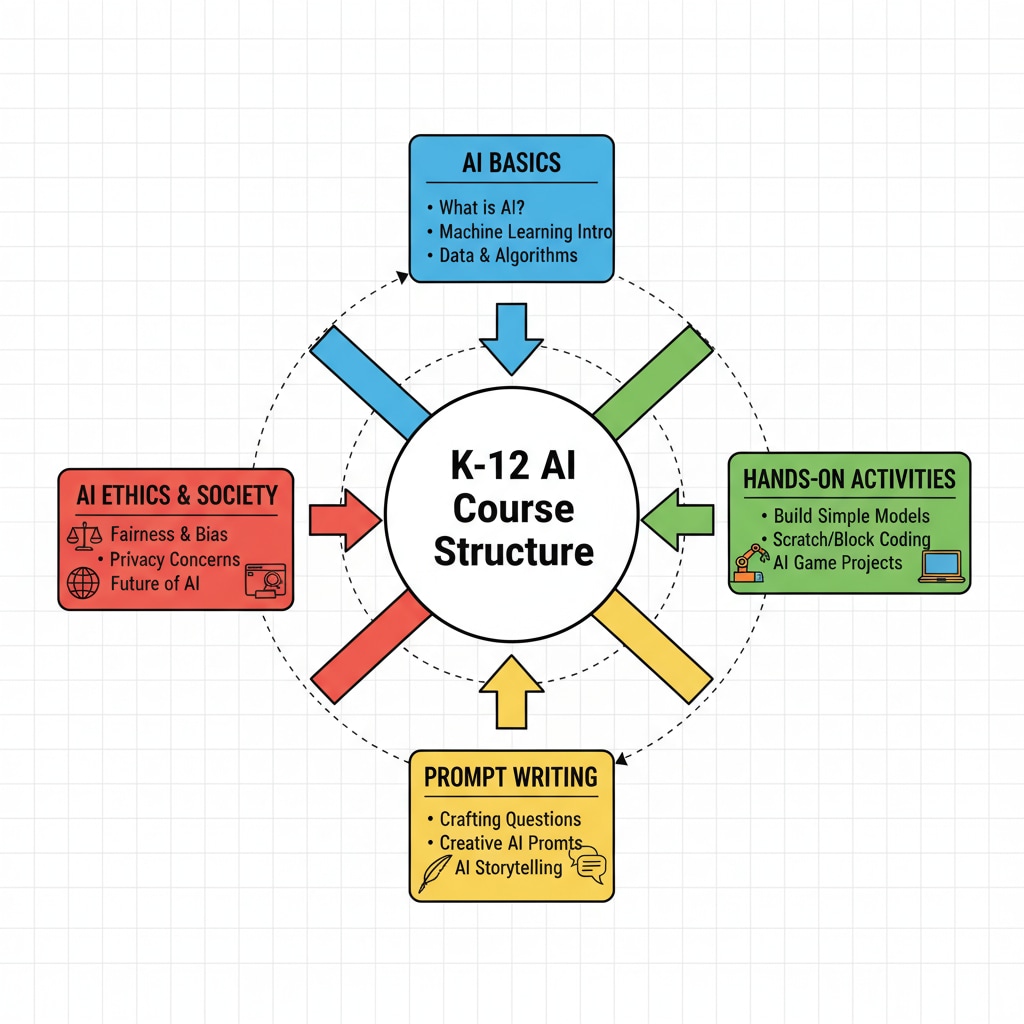AI courses, prompt writing, and educational development are becoming increasingly intertwined in the modern era. With the rapid progress of artificial intelligence technology, AI literacy education is set to become an integral part of the future K12 school curriculum system. This article delves into the necessity of AI courses in K12 education, the potential course framework, and the far-reaching implications for students’ future.
The Imperative of AI Courses in K12 Education
In today’s digital age, AI is everywhere, from virtual assistants on our smartphones to complex algorithms powering financial markets. For K12 students, being exposed to AI early on is crucial. It equips them with the skills to understand and interact with the technology that will dominate their future. According to Britannica’s definition of artificial intelligence, AI involves machines or computer systems performing tasks requiring human intelligence. By learning about AI in school, students can develop critical thinking skills, problem-solving abilities, and creativity. For example, they can analyze how AI algorithms make decisions and then apply this understanding to real-world situations.

The Structure of Potential AI Courses
The AI courses in K12 education might consist of several components. Firstly, there could be an introduction to AI basics, where students learn about the history, types, and applications of AI. This could be followed by hands-on activities, such as creating simple AI models using beginner-friendly tools. Prompt writing would also be a key part of the curriculum. As described in Wikipedia’s article on prompt engineering, prompt writing helps students communicate effectively with AI systems. They can learn how to write clear and concise prompts to obtain accurate and useful results from AI tools. Additionally, courses may include ethical considerations, teaching students about the potential negative impacts of AI and how to use it responsibly.

In conclusion, AI literacy education, encompassing AI courses and prompt writing skills, is of great significance for educational development in the K12 context. It not only prepares students for the technological challenges of the future but also nurtures their overall growth. As we look ahead, it is clear that integrating AI education into K12 curricula is not just an option but a necessity for the holistic development of the next generation.
Readability guidance: Short paragraphs and lists are used to summarize key points. Each H2 has a list where possible. Passive voice and long sentence ratios are controlled. Transition words like however, therefore, in addition, for example, and as a result are scattered throughout the text.


